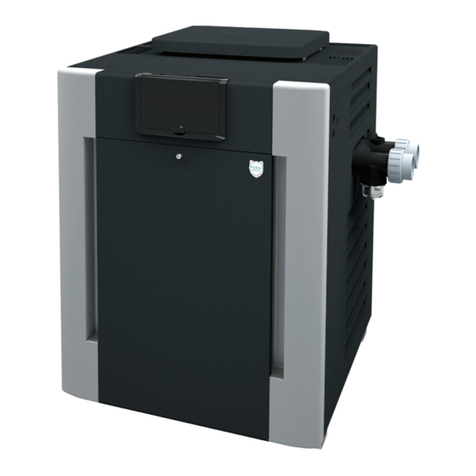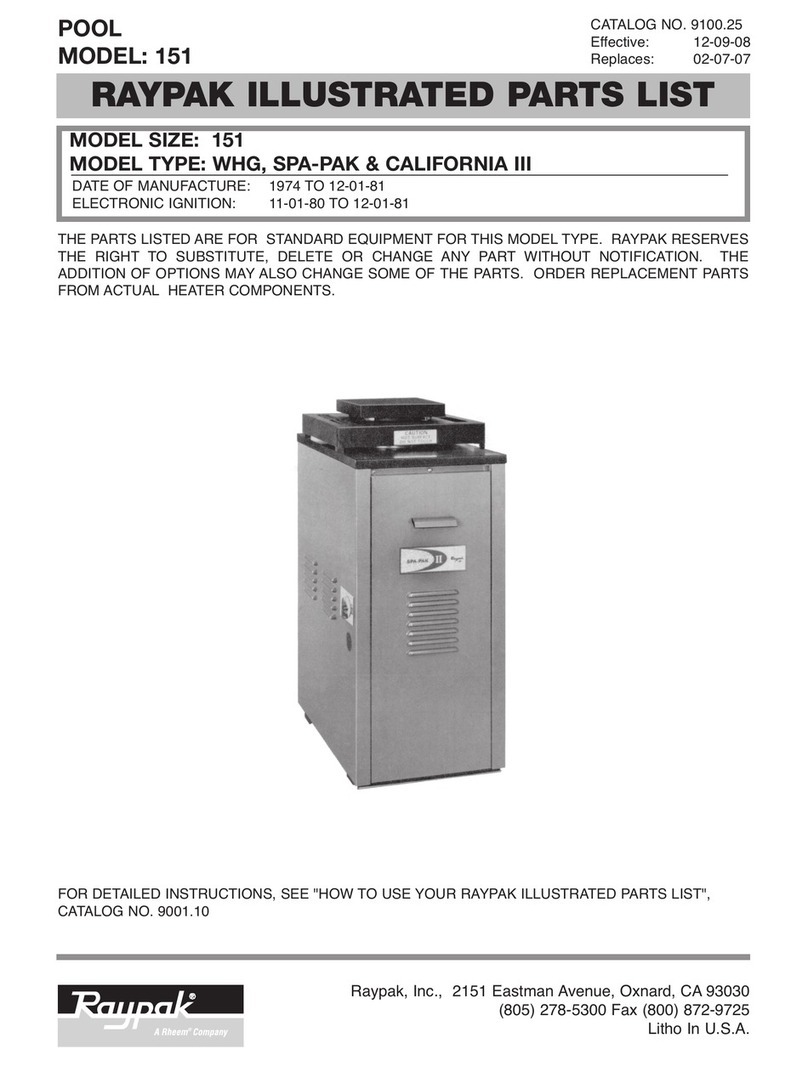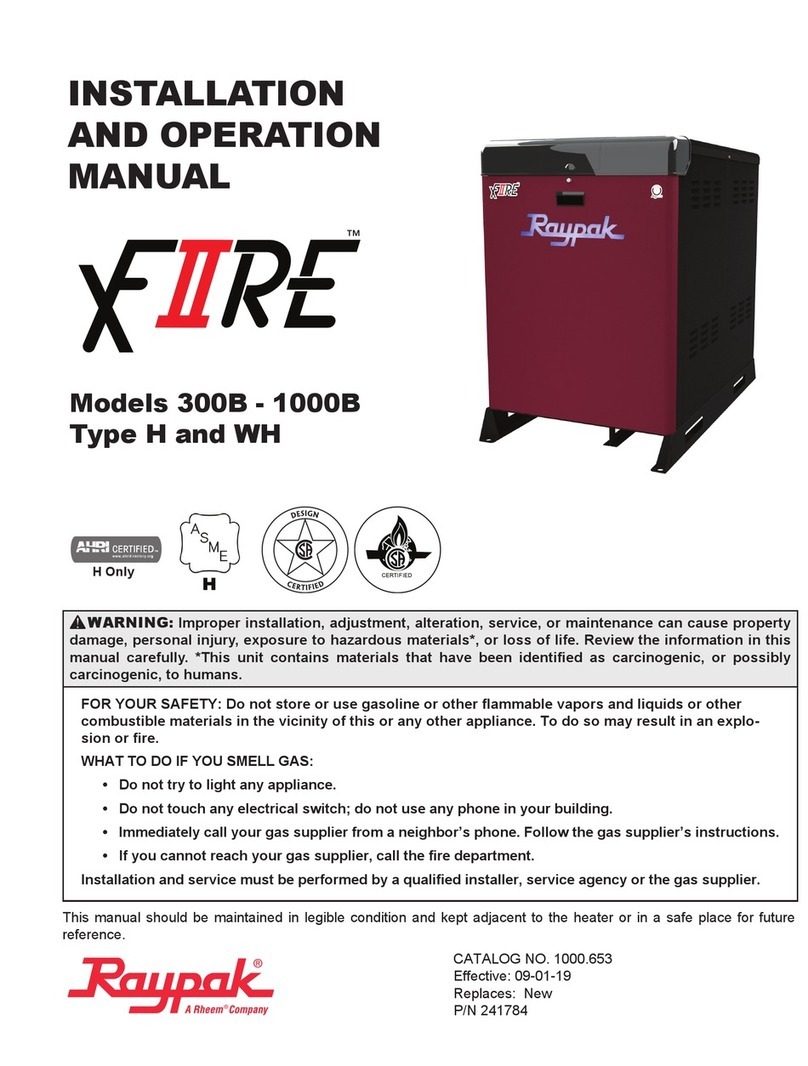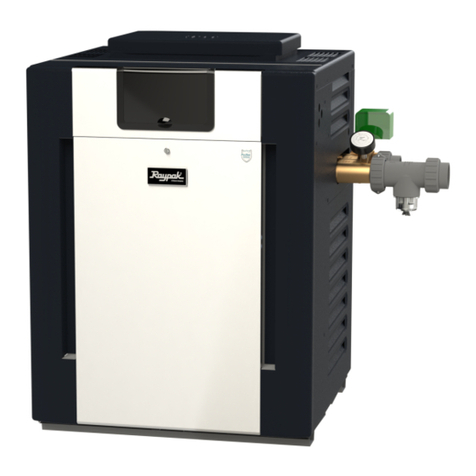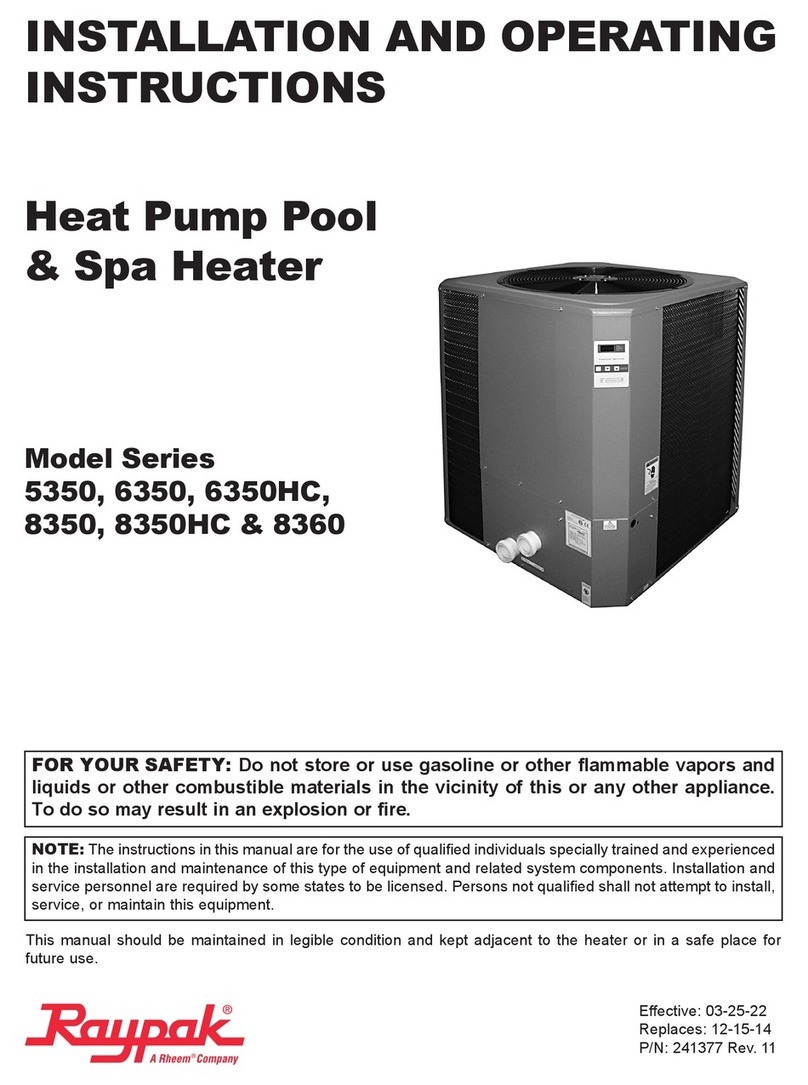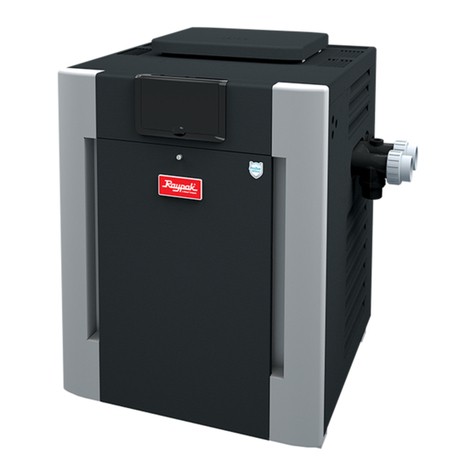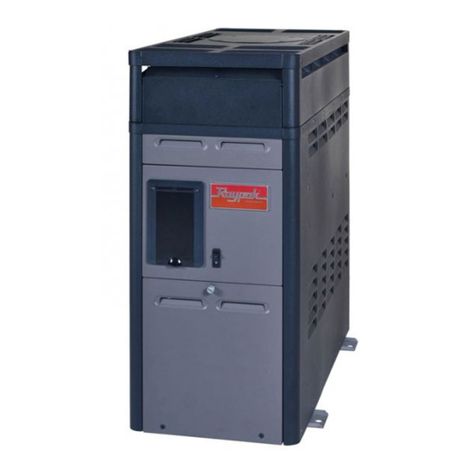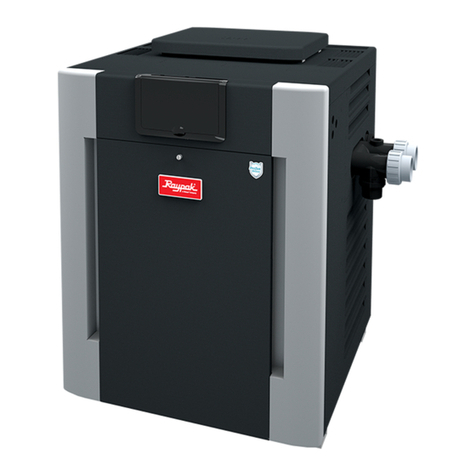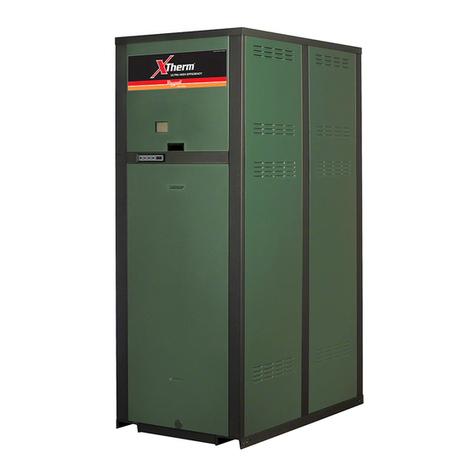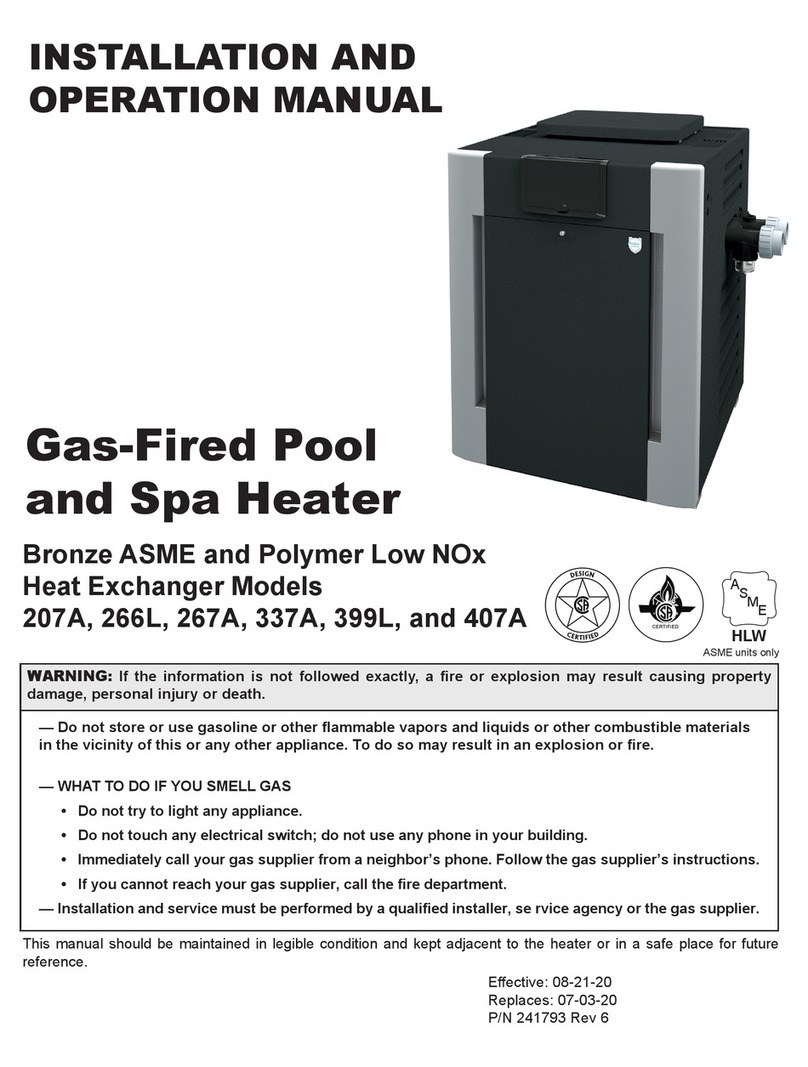
4
AADANGER: Failure to install the drafthood on indoor
installation and properly vent the heater to the outdoors
as outlined in the venting section of this manual can
result in unsafe operation of the heater. To avoid the risk
of re, explosion, or asphyxiation from carbon monoxide,
never operate this heater unless it is properly vented
and has an adequate air supply for proper operation. Be
sure to inspect the vent system for proper installation at
initial start-up, and at least annually thereafter. Refer to
the venting section of this manual for more information
regarding vent system inspections.
AAWARNING: Gasoline, as well as other ammable
materials and liquids (adhesives, solvents, etc.), and
the vapors they produce, are extremely dangerous. Do
not handle, use, or store gasoline or other ammable or
combustible materials in the vicinity of a heater.
AAWARNING: Improper installation, adjustment,
alteration, service, or maintenance can cause property
damage, personal injury or loss of life. Installation and
service must be performed by a qualied installer, service
agency, or the gas supplier.
AAWARNING: Do not install within 3 feet (0.9 m) of a heat
pump or an outdoor condensing unit. Strong air intake
from this type of equipment can disturb the combustion
process and cause damage or personal injury.
AAWARNING: UL-recognized fuel gas detectors are
recommended in all enclosed propane and natural gas
applications wherein there is a potential for an explosive
mixture of fuel gas to accumulate and their installation
should be in accordance with the detector manufacturer’s
recommendations and/or local laws, rules, regulations,
or customs.
AAWARNING: The heater shall not be located in an area
where water sprinklers, or other devices, may cause water
to spray through the cabinet louvers and into the heater.
This could cause internal rusting or damage electrical
components, and void the warranty.
1. WARNINGS
1.1. Pay Attention to These Terms
AADANGER Indicates the presence of immediate hazards which will cause severe personal injury, death or
substantial property damage if ignored.
AAWARNING Indicates the presence of hazards or unsafe practices which could cause severe personal injury,
death or substantial property damage if ignored.
AACAUTION Indicates the presence of hazards or unsafe practices which could cause minor personal injury
or product or property damage if ignored.
CAUTION CAUTION used without the warning alert symbol indicates a potentially hazardous condition
which could cause minor personal injury or product or property damage if ignored.
NOTE Indicates special instructions on installation, operation, or maintenance which are important but
not related to personal injury hazards.
AAWARNING: Both natural gas and propane have an
odorant added to aid in detecting a gas leak. Some people
may not physically be able to smell or recognize this
odorant. If you are unsure or unfamiliar with the smell
of natural gas or propane, ask your local gas supplier.
Other conditions, such as “odorant fade,” which causes
the odorant to diminish in intensity, can also hide,
camouage, or otherwise make detecting a gas leak by
smell more dicult.
AAWARNING: To minimize the possibility of improper
operation, serious personal injury, re, or damage to the
heater:
• Always keep the area around the heater free of
combustible materials, gasoline, and other ammable
liquids and vapors.
• Heater should never be covered or have any blockage
to the ow of fresh air to the heater.
AAWARNING: This unit contains refractory ceramic
ber (RCF) insulation in the combustion chamber. RCF,
as manufactured, does not contain respirable crystalline
silica. However, following sustained exposure to very
high temperatures [>2192°F (1200°C)], the RCF can
transform into crystalline silica (cristabolite). The
International Agency for Research on Cancer (IARC) has
classied the inhalation of crystalline silica (cristabolite)
as carcinogenic to humans.
When removing the burners or heat exchangers, take
precautions to avoid creating airborne dust and avoid
inhaling airborne bers. When cleaning spills, use wet
sweeping or High Eciency Particulate Air (HEPA)
ltered vacuum to minimize airborne dust. Use feasible
engineering controls such as local exhaust ventilation or
dust collecting systems to minimize airborne dust. Wear
appropriate personal protective equipment including
gloves, safety glasses with side shields, and appropriate
NIOSH certied respiratory protection, to avoid inhalation
of airborne dust and airborne ber particles.
